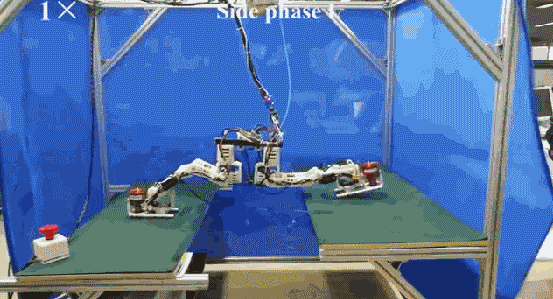
Recently, researchers from the Automation College of Guangdong University of Technology in China have developed a new type of automatic balancing robot developed under the code name Jet-HR1. The robot can adjust the center of gravity with a jet engine. The future biped robot may be able to realize its full potential. You can navigate forward in a variety of different road conditions and handle any potential obstacles.
Thanks to the jet-powered feet, the Jet-HR1 is able to span long distances, equivalent to 97% of its regressive length. In order to achieve this, the Jet-HR1 needs to maintain the balance of the body while maintaining the balance of one foot, and then repeat the whole process so that the other leg can move.
Huang Zhifeng, an associate professor at Guangdong University of Technology, said: "The combination of electric motors and jet technology has made this idea a reality. High thrust and weight ratio have become key. In this study, we have worked hard to design the course of action, including the most. Good posture and thrust plan. In addition, the mechanical design is also very important. In order to keep the robot in balance, it is very important to calculate the movement of the center of gravity, and then carefully plan the driving force."

The need for a power engine has become a key issue in solving this robotic movement. When we move back and forth for a long time on a gully, gravity is constantly adjusted to adapt to change. In this case, the Jet-HR1 uses the fan-type jet power on each foot to achieve the adjustment, so that it can generate about one-third of the thrust of the robot. Huang Zhifeng said that such robots can play an important role in the search and rescue of natural disasters in the future.
“At the moment, we will not consider commercializing this kind of robot. Our current focus and interest is to improve and perfect the robot. As you can see from the demo, we have just succeeded in taking the first step. For robots, this is a big step forward. But for the whole project, everything is just beginning. We believe this is the right direction, although there are still many problems to be solved, such as mechanism design, posture Stability and more."
















 RCCN WeChat QrCode
RCCN WeChat QrCode Mobile WebSite
Mobile WebSite